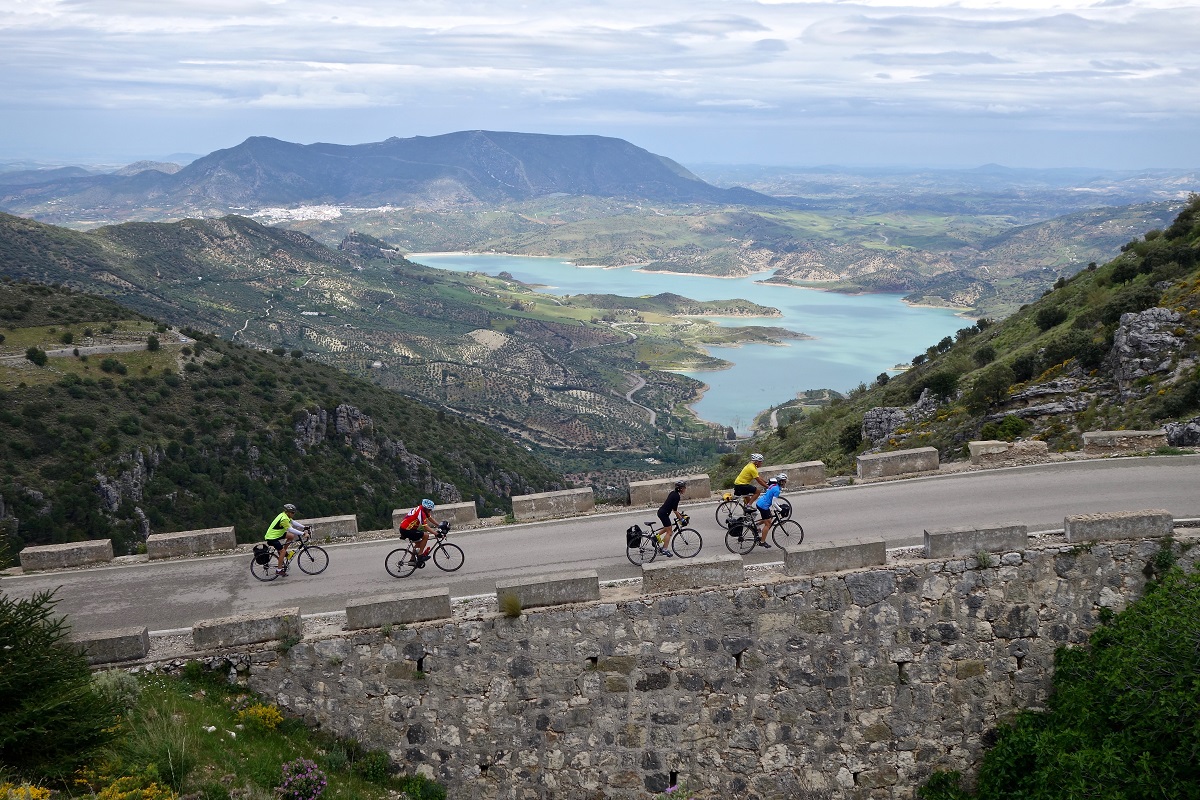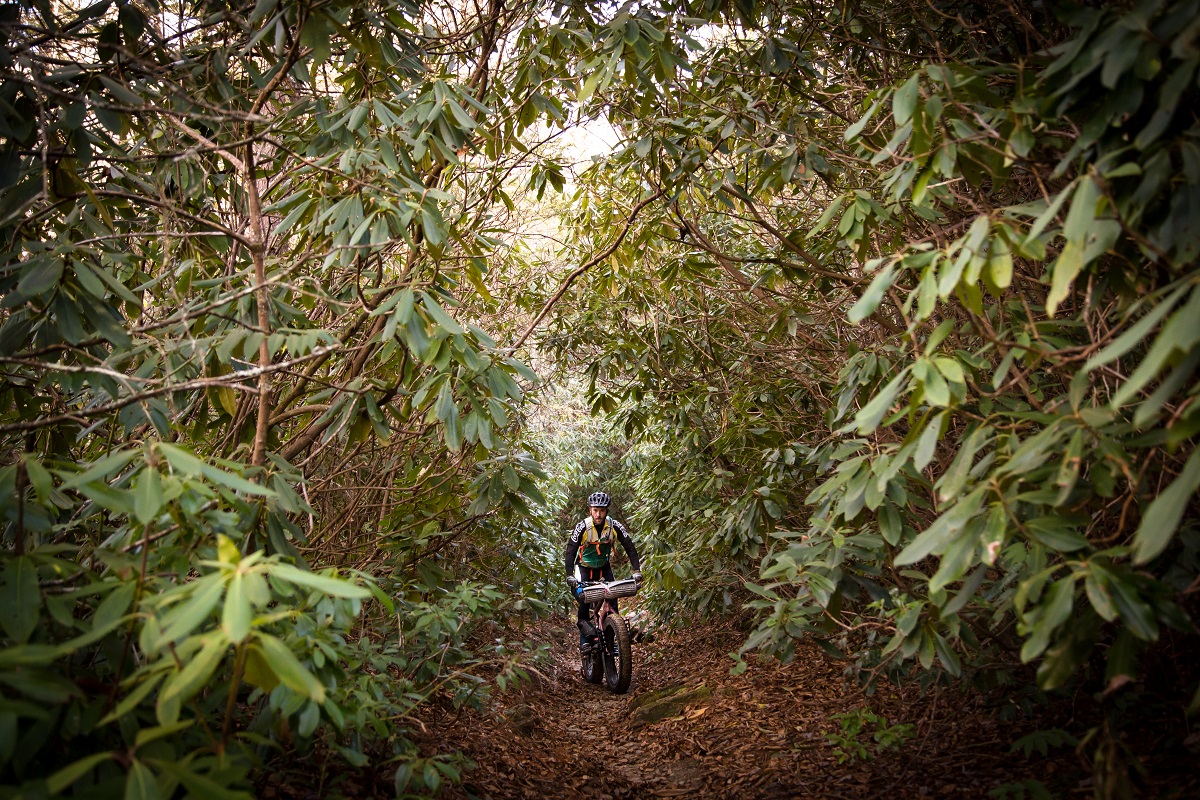What’s Your Touring Style?
Whether you’re dreaming of a cross-continent epic or just looking to ride over the next hill to a comfy Airbnb, you’ve come to the right place to launch your cycling adventure.
The definition of bicycle touring (or bicycle travel) is varied and debatable. But we believe that if you’re riding a bicycle for reasons other than training or exercise and leaving home for a night — be it to a remote campsite or the Ritz — you’re probably bicycle touring.
Here we’ll break down the various types of bicycle touring to help you decide which style is best for you. So let’s get the wheels rolling and look at how you can become involved in one of the most enjoyable outdoor pursuits on earth.
To get started, answer a few basic questions to help you determine generally what you want out of your bicycle adventure.
Do you want a guide?
If you want a guide, there are many touring companies that provide group tours with well-trained and helpful guides. Touring companies offer a variety of guided tours with different levels of support but will always map the route for you, reserve accommodations, and organize meals (though not always cook them for you).
No guide needed? The world is your DIY touring oyster.
Do you want to carry your things?
If you want someone else to carry your gear and provide support, you can do one of two things. Going sans guide, you can convince a friend to drive along your route and provide vehicular support, which could be a great experience for the right person. There are probably people in the world you could pay to provide this service as well, although that might constrict where you can ride.
Or for those wanting a guided tour, you can select a tour company that provides the level of support you’re looking for. Support can range from carrying all of your gear and catering all of your meals (often called fully supported) to carrying some of your gear and providing some meals.

In Europe, a new hybrid touring style is taking off — self-guided supported touring. Self-guided tours are ideal for those who prefer not to travel with a group, yet appreciate the security of a mapped route, designated overnight and dining locations, and gear shuttle all provided by the tour organizer.
If you don’t mind carrying your gear but enjoy the idea of a guided group tour, there are touring types for those too! At Adventure Cycling, we call these Self Contained Tours.
For those who prefer making their own way and carrying all of their own gear, whether in a group of their own making or alone, well, we call that self-contained touring, too, just without the capital T.
In essence, if it’s called supported touring, someone else hauls your things and may provide other types of support. If it’s called self-contained, your bike is the mule and you are the muscle. Both types lead to great bicycle adventures.
How do you want to sleep and eat?
Making these two decisions will greatly impact the cost of your cycling adventure and the amount of gear you’ll have to carry (if you’re the one carrying it).
Whether joining an organized guided tour or touring on your own, the cost of your trip will quickly increase with roofed accommodations like hotels and inns. Some would argue that the comfort will increase in tandem. You can accomplish inn-to-inn touring carrying little more than a credit card and a change of clothes (hence why this style is sometimes called “credit-card touring”).
While camping brings the cost down significantly, it increases the amount of gear you’ll need to have and carry (if you’re carrying it). It’s up to you where you want to shed pounds: tent or stars, hot meals or cold, banjo or harmonica? The options depend on your needs.
Guided tours that include camping and cooking your own (or group) meals are correspondingly less expensive than guided inn-to-inn tours where you’re primarily eating in restaurants.
What terrain do you want to ride?
If your first concern upon considering terrain is that you don’t own the right bike, set that aside for now. It’s not that difficult to use your mountain bike for road touring or to put wide, knobby tires on your touring bike so you can grab that gravel. Many guided touring companies have rental options or provide a bike for your tour.
Pavement
Paved roads often provide a smooth riding surface that you share with cars and trucks. Roads with wide shoulders are the safest road option for bicycle touring.
Rail Trails
Rail trails are abandoned railroad grades that have been repurposed into recreational pathways. Some feature hard surfaces of cement or blacktop, while others are covered with crushed limestone or another natural material. These trails provide some of the easiest (trains required low gradients) and safest (cars not allowed) cycling conditions you’ll find anywhere. In general, there is no better venue than a dedicated rail trail for introducing new cyclists and kids to the joys of bicycling and bicycle travel.
Dirt
Dirt is a catchall for any terrain that isn’t paved. Within the realm of roads, dirt can mean a well-maintained dirt road that meanders through the countryside. But it can also be an old forest service road that’s been rutted out by spring runoff or turned to washboard by logging trucks. The quality of the surface can make a big difference on how far you can travel in a day and how difficult the riding can be.

Also falling into the category of dirt are trails. Trails fall into two categories: doubletrack (probably an old, unused, and overgrown road) and singletrack. On this type of terrain, you’ll probably be more comfortable on a mountain bike of some sort and will typically need more technical bike handling skills to safely navigate a dirt trail.
Depending on where you are (mountains, hills, or plains), dirt riding is often slower than paved, sometimes more strenuous, but less trafficked by cars and trucks.
What level of difficulty do you want?
Every Adventure Cycling guided tour has a difficulty rating. The ratings are determined by mileage per day, number and length of climbs, number of days riding without a rest day, and technical bike handling skills needed.
When you’re creating your own route or looking into guided tours, consider each of these aspects and find something that fits in your comfort zone. We like to follow the old moto: Fewer miles per day means more time to explore!
Do you prefer a group?
For those looking for a guided tour experience, be sure to check that the group size of the tour meets your expectations, because they can vary quite a bit. Keep in mind, however, that you would rarely ride with the entire group. On most guided tours, every participant rides at his or her own pace, so you’ll generally have all day to complete the distance. Slower riders (or those planning on lots of photo ops!) can plan to leave earlier in the morning while those opting to zip through the miles may linger over coffee. Typically, folks who ride at a similar pace end up as riding buddies rather than the entire group riding as one big peloton.
Other Options
Looking for in-person instruction before you head out on the road? You might want to consider receiving a few days of professional guidance from the Introduction to Road Touring and other educational tours Adventure Cycling offers each year in different parts of the country.
